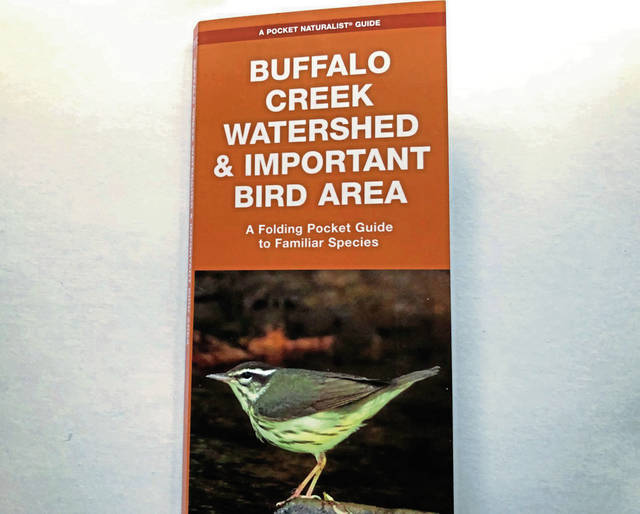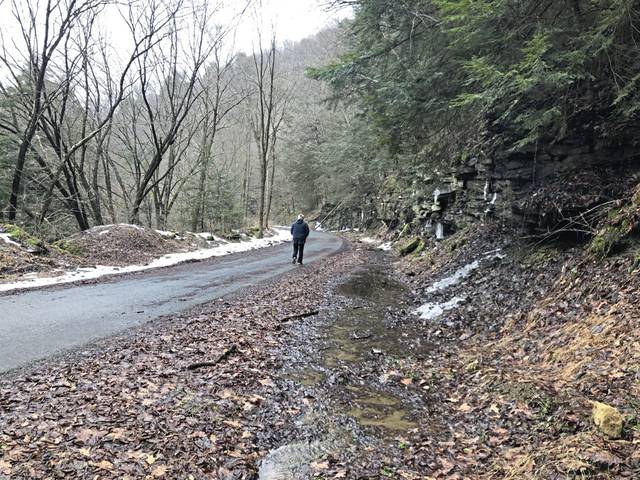More than 1,200 species and counting, free pocket field guide developed for Buffalo Creek watershed
The Buffalo Creek watershed might not be a national park, but it has enough wildlife and varieties of plants — more than 1,200 species — to warrant a pocket field guide developed by the Audubon Society of Western Pennsylvania.
Audubon, government agencies and other nonprofits have been working for years to preserve and protect what is arguably the wildest and most ecologically significant area close to Pittsburgh.
The watershed extends from Freeport to Butler, encompassing 170 square miles in Butler, Armstrong and Allegheny counties.
It’s home to a rich variety of plants and wildlife, including the Eastern hellbender salamander, the state-endangered massasauga rattlesnake and some species so rare environmental authorities keep their locations secret.
“It’s an amazing area that we want people to explore,” said Sarah Koenig, Audubon’s conservation director. The pocket guide was paid for by a grant from the Pennsylvania Department of Conservation and Natural Resources.
The guide, a slick, full-color, extended brochure, identifies almost 130 wildlife and plant species.
While most of the watershed is privately owned, the public can access the area via the Butler-Freeport Community Trail.
“We want to make sure people are aware and have the tools to connect and be out in this incredible area,” Koenig said.
The guide will be available free to the public this year at Audubon’s Babcock Nature Center at the Buffalo Creek Nature Park in Buffalo Township, which is under construction.
1,200 species
The field guide is only a teaser.
According to studies and estimates, there are more than 1,200 wildlife and plant species in the Buffalo Creek watershed. They include 945 plant species, 47 species of mammals (representing 77% of mammals found in the state), 45 dragonflies and damselflies (other insects not documented), 65 species of fish, 23 amphibians and 17 reptiles.
“The watershed is a mixture of forest and agriculture lands that have been protected by its topography,” said Charles Bier, a Buffalo Township resident and senior director of conservation science for the Western Pennsylvania Conservancy. The sides of the steep, hemlock-lined valleys cannot be easily developed and have escaped significant disturbances.
But the watershed is not just special because of its relatively untouched state. The variety of rock, soils, streams and landscape are unique and have attracted wildlife and plant species not common to the region, Bier noted.
“All the curves and bends of the creeks cut through a plateau, exposing different layers of geological history, providing microhabitats,” he said. “There are uplands that are warm and drier, then cool, moist valleys with Eastern hemlock.”
According to an inventory conducted by the Pennsylvania Natural Heritage Program, the Butler County stretch of the Buffalo Creek watershed is carved in sandstone.
It’s exposed at “several small cliffs along the valley, which are home to calcium-loving plants such as walking fern, wild hydrangea, sharp-lobed hepatica, wild ginger, maidenhair fern and bloodroot.”
The limey sandstone also influences the soil chemistry and vegetation of the valley’s forest. The lower slopes and floodplain are dominated by tuliptree, Eastern hemlock, sugar maple, American basswood, yellow birch and ashes.
1st recognized in 1889
The uniqueness of the area was flagged in 1889 with a rare bird discovery by the first curator of birds at the Carnegie Museum of Natural History, W.E. Clyde Todd. When he was a boy visiting his grandparents’ Buffalo Township property, Todd documented a nesting pair of magnolia warblers, a species not known to nest in the region.
In 1942, Todd went on to donate his family’s Buffalo acreage to the Audubon Society, which established the Todd Nature Reserve along Kepple Road and acquired additional properties.
The area has since been identified by Audubon as an Important Bird Area because of the unusual habitat and diverse wildlife and plants.
Remove the ads from your TribLIVE reading experience but still support the journalists who create the content with TribLIVE Ad-Free.





